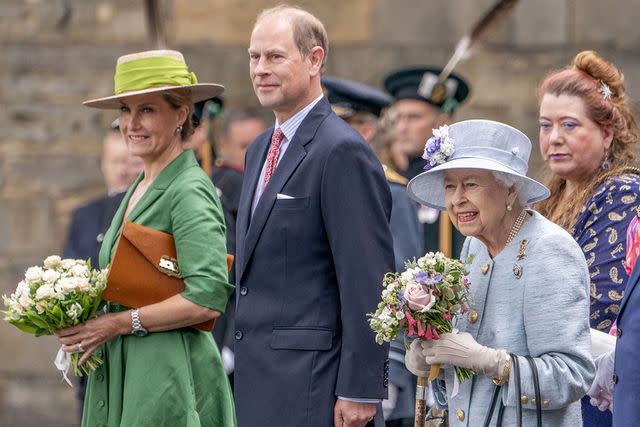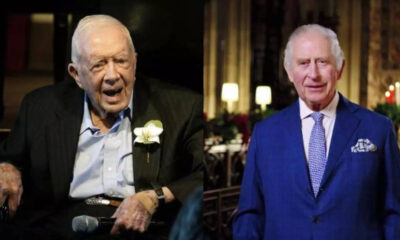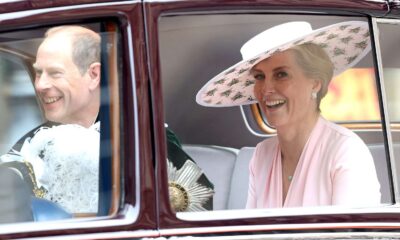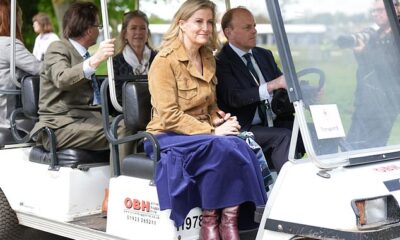Must Read
Uncommon Tribute: Prince Edward and Duchess Sophie’s Unique Encounter in England’s Smallest County
Prince Edward and Duchess Sophie recently experienced an unusual tradition during their visit to Rutland, the smallest county in England.
This week, the Duke and Duchess of Edinburgh made their inaugural trip to Rutland and took part in a centuries-old custom as a result of never having visited this region before.
During their visit to Rutland, the royal couple explored various landmarks including Oakham Castle, the Duke of Edinburgh Memorial Garden, and Rutland Showground.
As a consequence of their prior absence from the castle, Prince Edward and Sophie were required to make a distinctive gesture – they gifted a double horseshoe that will eventually adorn the castle walls.
In Rutland, it is customary for all peers of the realm and royal household members on their first visit to present a horseshoe as a symbolic forfeit.
Legend has it that surrendering a horseshoe signifies settling one's debts completely before departing.
The historical connection to the Ferars family adds an intriguing dimension to this tradition, as Henry de Ferars, Duke William's master of horse during the Norman conquest, used a coat of arms featuring six black horseshoes on a silver background.
The significance of horseshoes at Oakham Castle lies in the belief that they ward off evil, preventing the devil from nesting within the castle walls.
The horseshoes are affixed in the French style, with the open end facing downward.
This positioning is thought to retain good fortune within the castle, safeguarding it from being squandered.
Although Oakham Castle currently showcases around 250 horseshoes in its Great Hall, this collection represents only a fraction of the total number displayed over the centuries.
Historically, horseshoes were exhibited outside the castle gates, making them vulnerable to theft.
Some lesser-known contributions have also mysteriously disappeared over time, while a substantial quantity of horseshoes was repurposed as scrap metal to support the First World War effort in the early 20th century.






































